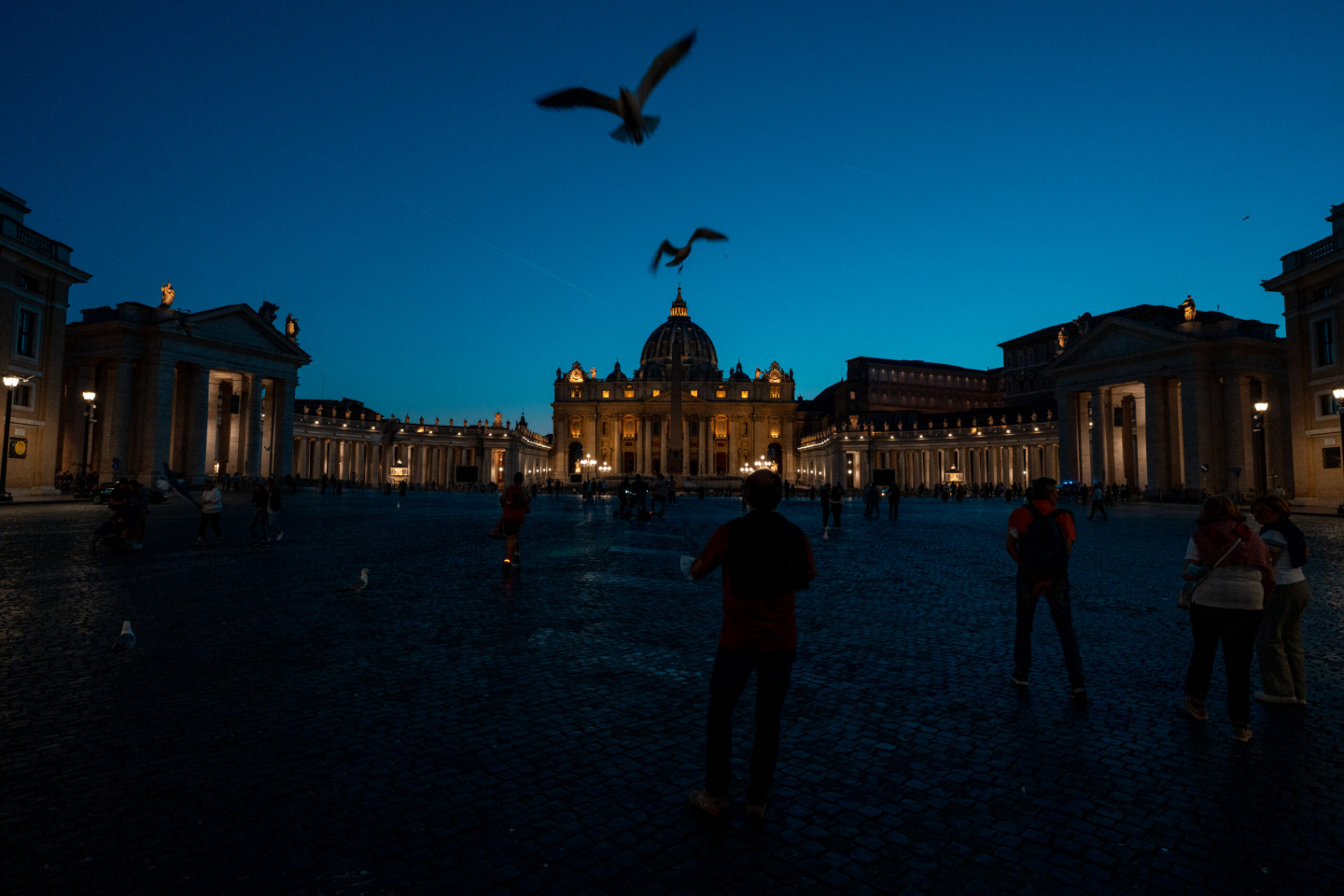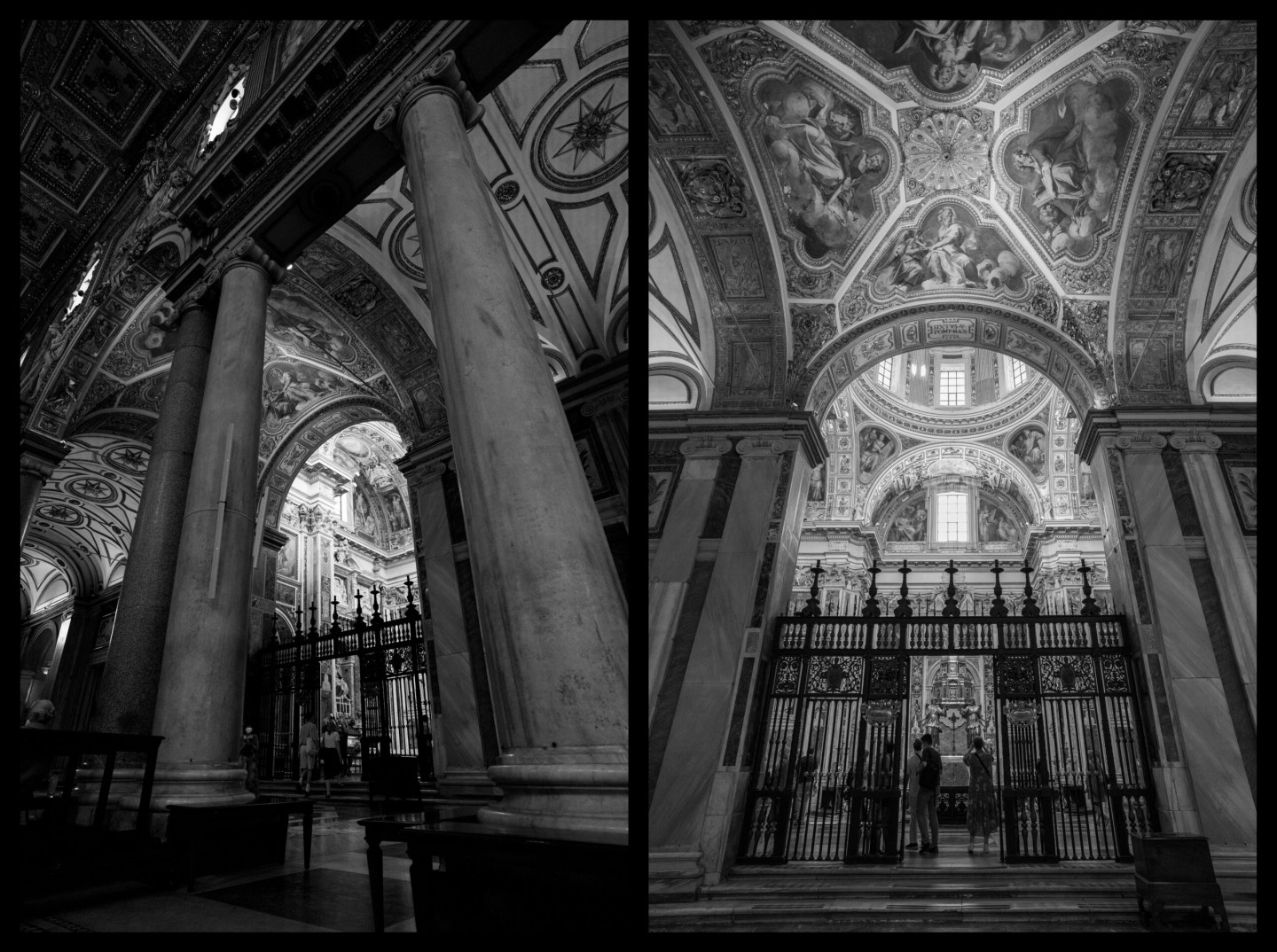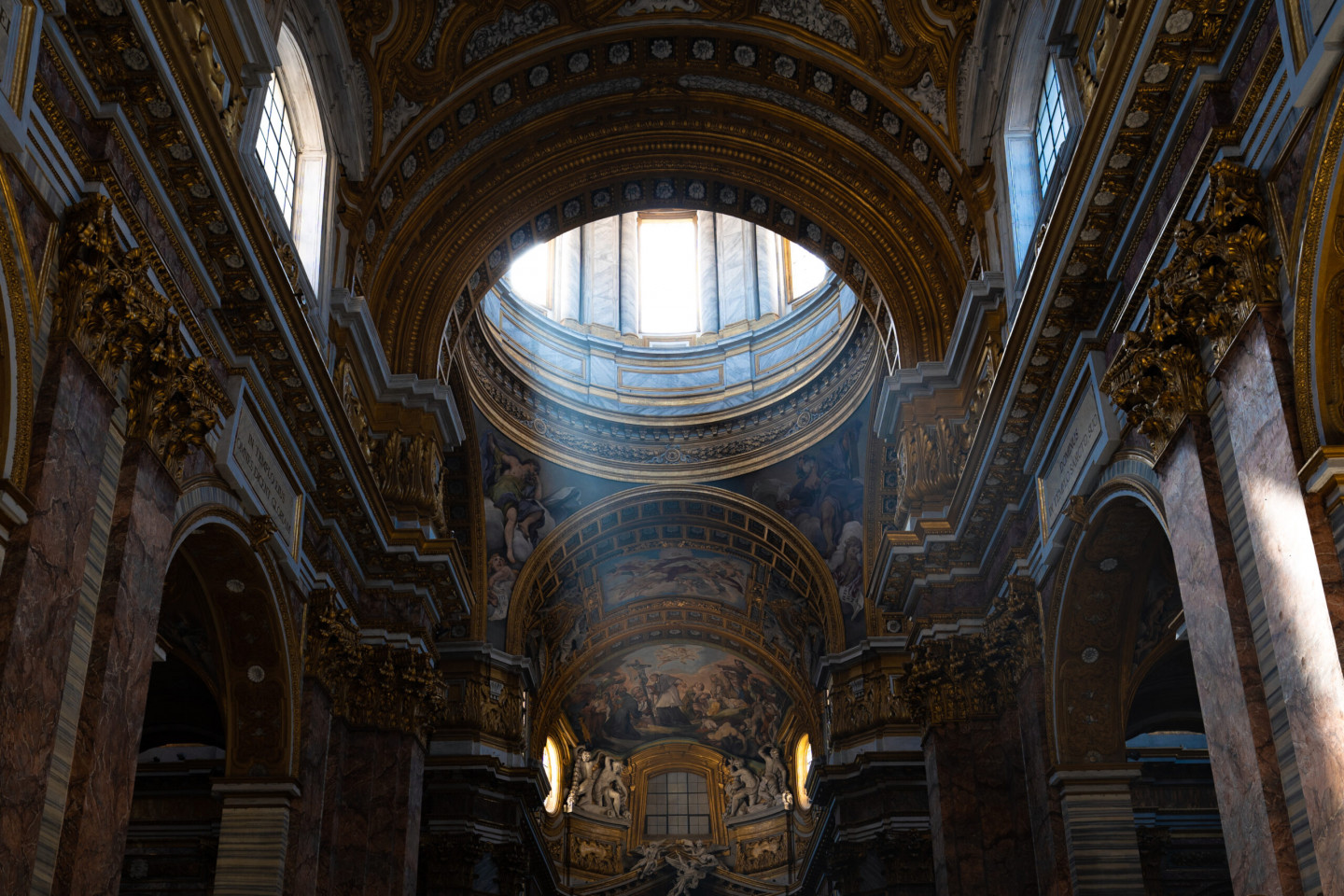A Santo Stefano Rotondo-ban először tavaly, a Palazzo Falconieri örökségvédelmi dokumentálása közben jártam. Idén a magyarok templomát egyik nap végén sikerült hazafelé útba ejtenünk, de a meleg és a fáradt lábak ellenére kicsit még sietnünk is kellett, hogy zárás előtt még be tudjunk pillantani a különleges belső térbe. Tavaly két kollégám – akik körtemplomok kutatásával foglalkoznak, valamint a kortemplom.hu oldalt is szerkesztik – említette egyik szabadnapunkon, hogy ide mindenképp ki szeretnének menni. Innen jött az ötlet, hogy megkérjem Varga Gézát – akinek a fentiek miatt már van ebben rutinja – egy rövid ismertető megírására:
A San Stefano Rotondo templom több szempontból is érdekes ókeresztény szakrális épület. Különlegesége, hogy a 15 század óta - amikor is a pálos rend birtokába került a Celio dombon álló körtemplom - mind a mai napig magyar vonatkozású templomnak tekinthető. Emellet a centrális kialakítású ókeresztény templom egy olyan szakrális tér amely centralitása ellenére nem memoriális hanem gyülekezeti funkciót töltött be és így párhuzamba állítható az Árpád-kori körtemplomokkal vagy más néven rotundákkal.
Közép-Európában, azon belül is a Magyar Királyság területén kiemelkedően nagy számban épültek rotundák az Árpád-kor folyamán. A Kárpát medence területéről több mint 150 emlékről van tudomásunk. Ezek közül több még ma is megtekinthető. Legismertebbek közé tartozik az ösküi, a kallósdi, a nagytótlaki vagy a szalonnai rotundák. Azonban régészeti feltárásoknak köszönhetően tudjuk, hogy olyan városokban is álltak rontundák, mint Veszprém, Eger, Miskolc vagy éppen Gyulafehérvár. Ezeknek a templomoknak a mérete azonban eltörpül a római San Stefano Rotondo-tól és a téralakitásuk is jóval egyszerűbb, nem bazilikális szerkesztésűek. Azonban közös bennük, hogy centralitásuk ellenére alapvetően nem csak memoriális térként, hanem egyszerű gyülekezeti templomként is funkcionáltak.
I first visited Santo Stefano Rotondo last year while documenting the Palazzo Falconieri. This year, at the end of one day, we managed to reach the Hungarians’ church just in time, but despite the hot weather and tired legs, we had to hurry a bit to get a glimpse into the special interior before closing. Last year, two of my colleagues – who do research on round churches and also edit kortemplom.hu – mentioned on one of our days off that they would definitely like to go out here. Hence the idea to ask Géza Varga, who already has a routine for this, to write a short description:
The Church of San Stefano Rotondo is an early Christian sacred building that is interesting in many aspects. Its speciality is that since the 15th century – when the round church on Celio hill came into the possession of the Pauline order – it can be considered a Hungarian-related church. In addition, the centrally designed early Christian church is a sacral space which, despite its centrality, served not a memorial but a congregational function and can thus be paralleled with the Árpádian circular churches or rotundas.
In Central Europe, especially in the territory of the Kingdom of Hungary, an outstanding number of rotundas were built during the Árpádian period. We know of more than 150 monuments from the Carpathian Basin. Several of them can still be viewed today. The most well-known are the rotundas in Öskü, Kallós, Nagytótlak or Szalonna. However, thanks to archeological excavations, we know that there were rotundas in cities such as Veszprém, Eger, Miskolc or Gyulafehérvár. However, the size of these churches is dwarfed by the Roman San Stefano Rotondo, and their spatial design is also much simpler, with no basilica construction. What they have in common, however, is that despite their centrality, they basically functioned not only as a memorial space but also as a simple congregational church.
Photographs: Balázs Bodó - ALL RIGHTS RESERVED. (20mm ISO3200 F5.0 1/80)








